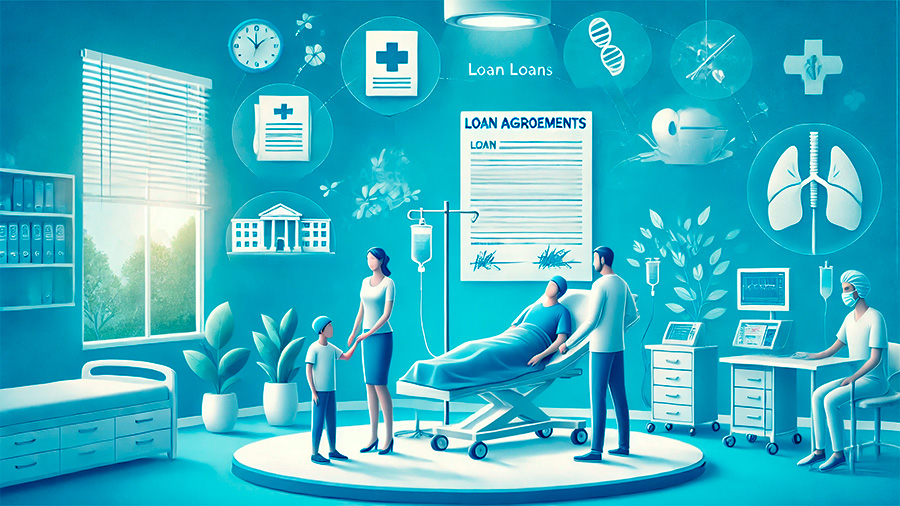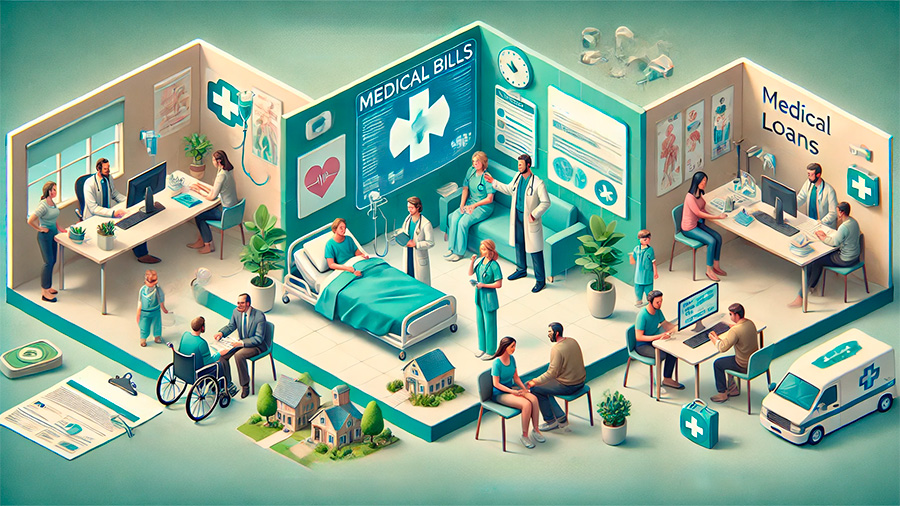Healthcare costs can be a significant financial burden, especially when patients require costly treatments or surgeries that aren’t fully covered by insurance. In these situations, medical loans provide a vital solution, offering patients access to the funds they need to cover expenses while allowing them to pay over time. This article explores how medical loans work, the benefits they offer, and how they help make expensive healthcare treatments more affordable and accessible.
What Are Medical Loans?
Medical loans are personal loans designed specifically to cover healthcare expenses. Unlike traditional loans, medical loans can be used to pay for a wide range of medical treatments, from elective surgeries to emergency procedures, dental work, and fertility treatments. They provide patients with the financial flexibility to get the care they need without having to pay for everything upfront.
1. How Medical Loans Work
Medical loans function similarly to other types of personal loans. A borrower applies for a loan, and if approved, they receive a lump sum of money to cover medical expenses. The loan is repaid in fixed monthly installments over a set period, with interest. The terms of medical loans vary depending on the lender, but they are typically designed to be more affordable than credit cards or payday loans.
Key features of medical loans:
- Loan amount: The loan amount is based on the estimated cost of medical treatments, which can range from a few thousand dollars for minor procedures to tens of thousands for major surgeries.
- Repayment terms: Medical loans usually come with fixed repayment terms, meaning borrowers know exactly how much they need to pay each month and when the loan will be paid off.
- Interest rates: Interest rates vary by lender and the borrower’s credit history, but medical loans generally offer lower rates than credit cards or payday loans, making them a more affordable option for covering medical expenses.
- No collateral required: Most medical loans are unsecured, meaning they do not require the borrower to put up any assets as collateral.
2. Types of Medical Loans
There are different types of medical loans available, each designed to meet the unique needs of patients. Some loans are provided directly by banks or credit unions, while others are offered by specialized lenders focusing on healthcare financing.
Common types of medical loans:
- Personal loans: Many banks and credit unions offer personal loans that can be used for medical expenses. These loans typically have fixed interest rates and repayment periods, making them a straightforward option for many borrowers.
- Medical credit cards: Some healthcare providers partner with financial institutions to offer medical credit cards, which can be used to pay for medical treatments. These cards often offer promotional 0% interest rates for an introductory period, but interest rates can increase dramatically after the promotional period ends.
- Healthcare-specific loans: Some lenders specialize in providing loans specifically for medical expenses, with terms tailored to healthcare costs. These loans may offer longer repayment periods or lower interest rates compared to traditional personal loans.

The Benefits of Medical Loans
Medical loans offer a number of advantages for patients who need to cover healthcare expenses that aren’t fully covered by insurance. By providing access to immediate funds, medical loans can help patients receive the care they need without waiting for approval or relying on high-interest credit cards. Below are some of the key benefits of medical loans:
1. Accessibility to Immediate Healthcare
One of the most important benefits of medical loans is that they allow patients to access healthcare treatments when needed, without having to wait for long periods or struggle to save up the necessary funds. For individuals in need of urgent medical procedures, having access to a medical loan can be a lifesaver, allowing them to undergo treatment immediately.
How medical loans provide immediate access to care:
- Emergency procedures: For individuals requiring emergency surgery or urgent medical attention, a medical loan can provide the necessary funds to cover treatment costs without delay.
- Elective surgeries: Medical loans help patients afford elective procedures, such as cosmetic surgery or fertility treatments, that may not be covered by insurance but are important for their well-being.
2. Affordability with Fixed Payments
Medical loans often feature fixed repayment schedules, which means that patients can spread the cost of their medical expenses over a period of time. This can make healthcare more manageable, especially for major surgeries or treatments that would otherwise be too expensive to pay for in a lump sum.
How fixed payments benefit borrowers:
- Predictable budgeting: With fixed monthly payments, patients can budget more effectively and avoid the financial strain of unexpected large medical bills.
- Avoiding high-interest credit cards: Using medical loans rather than credit cards can help patients avoid the high-interest rates and fees associated with revolving credit card debt.
3. No Need for Insurance Coverage
Not all medical treatments are covered by insurance, especially elective procedures or treatments that are outside of the standard insurance plans. Medical loans provide an alternative for those who don’t have insurance or whose insurance doesn’t fully cover their costs. This allows patients to proceed with necessary treatments without having to pay the full amount upfront.
When insurance doesn’t cover the full cost:
- Elective procedures: Many elective surgeries, such as cosmetic procedures, dental work, or weight loss surgery, are not covered by traditional insurance plans. A medical loan can cover these costs.
- High deductibles or out-of-pocket maximums: Even for insured individuals, high deductibles or out-of-pocket maximums can make certain treatments unaffordable. Medical loans can help cover these additional costs.

When to Consider a Medical Loan
While medical loans offer many benefits, they should be considered carefully. Before taking out a loan, patients should assess whether it is the best option for their financial situation. Medical loans are ideal in situations where insurance won’t fully cover the costs or when immediate access to care is needed.
1. When You Have High Medical Costs
If you face substantial medical bills that are not fully covered by insurance, a medical loan can help cover the gap. This can be particularly useful for costly surgeries, hospital stays, or long-term medical treatments that insurance doesn’t fully reimburse.
2. When Immediate Treatment Is Required
For urgent medical situations or procedures that cannot be delayed, medical loans can provide the necessary funds to ensure that you get the care you need without having to wait for insurance approval or rely on high-interest credit cards.
3. When You Lack Adequate Savings or Insurance Coverage
For individuals who don’t have enough savings or adequate insurance coverage, medical loans are an accessible way to obtain the funds needed to pay for medical care. These loans are often available even to those with average or below-average credit, making healthcare more accessible to a broader range of patients.
How to Apply for a Medical Loan
Applying for a medical loan is similar to applying for any other personal loan. Patients will need to provide basic information about their financial situation, including income, credit score, and employment status. It’s important to shop around for the best interest rates and terms to ensure you’re getting the most affordable loan for your medical needs.
1. Compare Loan Options
Different lenders may offer different interest rates, repayment terms, and loan amounts, so it’s important to compare multiple options before committing to a loan. Look for lenders that specialize in healthcare loans and check for any special promotional offers or zero-interest financing periods.
2. Review the Loan Terms
Before accepting a loan, make sure you fully understand the repayment terms, including the interest rate, repayment period, and any fees associated with the loan. Choose a loan with terms that fit your budget and repayment ability.
3. Submit Your Application
Once you’ve chosen a loan, submit your application, and provide any required documentation, such as proof of income, medical bills, and identification. The application process is usually quick, with many lenders offering approval within a few days.
Conclusion
Medical loans are an important financial tool that helps patients manage the high costs of healthcare and access life-saving treatments. By providing low-interest financing options, medical loans allow patients to spread the cost of medical procedures over time, making expensive treatments more affordable and accessible. Whether for elective procedures, emergency treatments, or necessary surgeries, medical loans can provide the financial relief needed to ensure that patients receive the care they need when they need it most. When considering a medical loan, it’s important to carefully evaluate your options, understand the loan terms, and choose the loan that best fits your financial situation.




